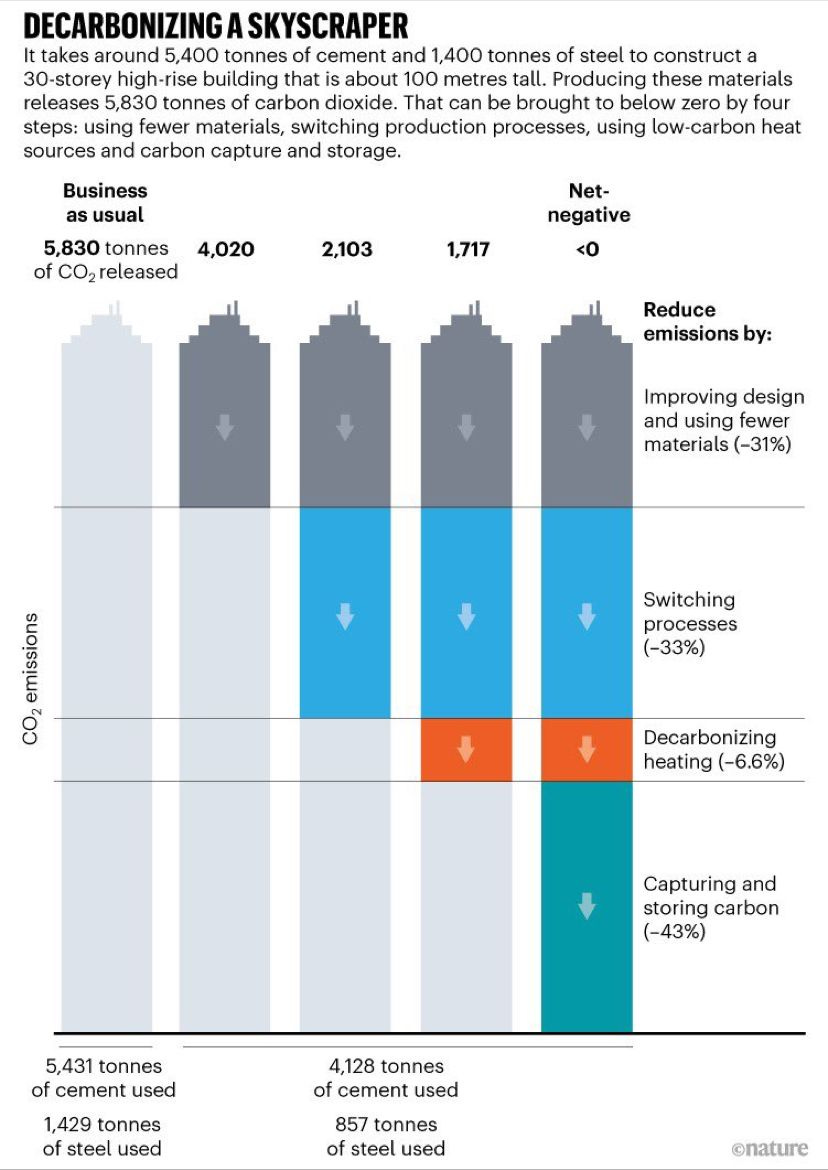Revolutionizing Commercial Real Estate: Today's Blueprint for Success
Unveiling Key Strategies for Thriving in Today's Dynamic Real Estate Market
Most of the Real Estate products delivered within the past 4 to 5 years appear to be a thing of the past.
Why am I saying this?
It takes a long time to deliver a Real Estate product from paper to built form (land acquisition, design, permits, financing, construction) and by the time the product is complete the original idea behind it could have originated as long as 10 years ago. Back then the mantra was: “Build it and they will come” (’they’ = tenants). Sustainability was mainly a tick in the box exercise where a building had to get a certain certification rating to be able to be categorised as “Sustainable”.
The Covid-19 pandemic has changed all this and helped accelerate our industry forward in a way that was unimaginable only a few years ago.
Since the pandemic we have been catapulted forward to something that feels light-years ahead. One might argue it was simply the spark that was needed to finally start moving the needle and help shift mindsets.
In this newsletter I will share with you what I believe should be the key pillars to accomplish successful Commercial Real Estate products:
Low carbon strategies.
Functionality and efficiency.
Technology integration.
Building Community.
I will only touch the surface of these topics, but I’m hoping they will provide enough food-for-thought to help you draw some conclusions and spark a debate. I promise that deeper dives into each aspect will be the subject of future newsletters.
Let’s dive in.
1. Low Carbon Strategies.
Sustainability Certifications are no longer enough. To achieve low carbon or zero carbon a more strategic and 360 degree approach is required.
The new carbon taxonomy will have an impact on values and should be accounted for when defining the Investment Thesis and Development Business Plan. Stakeholders (investors, occupiers, regulators, cities) all have ESG protocols and governance strictly at the forefront of their business ethos. Real Estate should also be at the forefront of this.
A few key initiatives that should be considered:
Reduce operational carbon.
Remove fossil fuels from construction operations.
Monitor building energy performance during operations.
Promote use of low embodied carbon materials and technologies.
Promote Design for Manufacturing Assembly and Disassembly (DFMAD).
Empower the customers and community to contribute to the virtuous cycle.
The benefits to this are exponential as they will create:
Real estate that generates Green-Premium value.
Access to Green Loans to finance deals = > lower interest rates.
Equity partners willing to invest in products aligned with their ESG values.
Places where people want to come back to = > keep generating revenues.

2. Efficiency and Functionality.
Real Estate development projects should focus on getting the fundamentals right. This will ensure that the outcome will be a timeless product where customers thrive and want to return to.
Below is a quick primer list of specific areas applicable to most commercial asset classes (always assess it against Local Regulatory Compliance requirements in the region where you operate):
Wall to floor ratio = c.0.4.
Rationalise the structural grid.
Maximise daylight penetration.
Building Nett to Gross ratio = 68-70%.
Plant ratio to GIA = push for 8% or less.
Floor-plate Nett to Gross ratio = 80-85%+.
Building address and main entrance location.
Can the building be adapted to a different use in the future?
Optimise the footprints of Cores, basements, car parking areas and plant spaces.
A good case study to look at is 100 Bishopsgate in London.
If you want to achieve a timeless product I would strongly encourage to assess it against these points.
3. Technology Integration.
I believe a building becomes really smart when it leverages technology to facilitate transactions between customers as well as enhancing community experience.
Real Estate is already powered by sophisticated digital infrastructure and backbones. What is lacking is a well designed User Interface and User Experience that matches the level of what we carry in our pockets (smartphones) every day.
Below are a few suggested areas to focus on:
Exploit existing digital platforms to enhance community experience = > from solving problems to loneliness to assisting neighbours in need.
Enhancing transactional activities = > smart real estate enhances revenue potential by connecting all its customers.
Creating customer and building feedback loops = > help improve how the building operates and customer satisfaction.
I firmly believe the potential here is endless and that we have just seen the very tip of the iceberg.
Adopting technology to switch on or off light bulbs via an app on our phones is something that should be relegated to the past.
Digital technology should instead augment Real Estate to enhance customer experience, improve building performance, reduce energy consumption, enable transactions and generate additional revenue streams.
4. Building a Community.
One of the biggest challenges with creating new places is that we tend to place all the focus on the physical product and leave the creation of community as a completely secondary aspect.
A good example where community was created first is MIND - Milano Innovation District with the creation of Federated Innovation (follow the links to find our more).

The saying used to go like this: Build it and they will come!
What if Instead, we flipped this dogma on its head and we started working on creating a community or tribe of early adopters as the first step?
The application of this method could have benefits in the following few aspects:
Creates potential for new opportunities.
Helps identify the best product to serve the needs of the community.
It helps establish your brand and validate it before the product is created.
You have the potential to become the enabler of that community, build trust, provide connections.
This is not a final recipe, but it’s meant to help inspire a mindset shift in Real Estate.
To accomplish a lasting legacy it’s no longer enough to create a great building or place. A more human-centric approach is needed to ensure that Customer and Community experience align with the Real Estate product.
Remember that people are the best promoters of your brand and product.
In Summary
As property developers we have a responsibility to make sure that the products we create have the least impact on the planet and resources, whilst providing the highest level of benefit to people’s lives and wellbeing.
So remember if you are serious about achieving a successful lasting legacy include the following in your next product:
Adopt Low Carbon strategies.
Make it functional and efficient.
Make it technology enabled.
Start with the Community.
Let me know what you think in the comments below.







